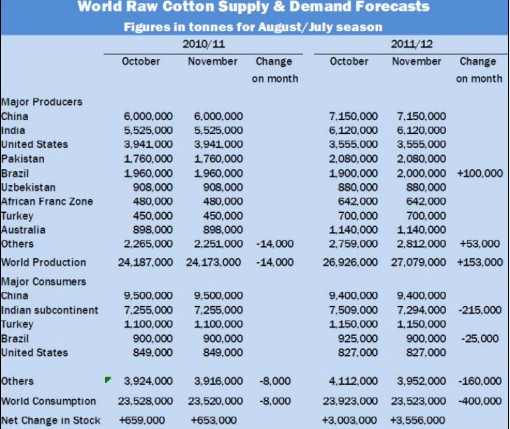|
New technology took centre stage, particularly mobile devices. But it appeared that publishers were still wary of embracing electronic delivery unless it proved to have new and attractive features to set alongside traditional books. A Shenzhen-based manufacturer of portable MP3, MP4, global positioning system (GPS) and digital photo frame devices called Keen High presented its Multimedia eReaders WF701, WR850, MR702 and other options. Some of these use an operating system named WR850 that includes WiFi connectivity to enable online video gaming as well as reading books. It's based on the Android 2.1 operating system and the Readers come with colour displays instead of black and white e-Ink screens. Yet the older screens are still favoured for book reading, said Alex Lee of Keen High. "We have our advantages and appeal to those who want to display pictures on the device. And we compete very much on price," he said. The wholesale price for the MR702 is US$60. Keen High was targeting publishers as potential customers for multimedia eReaders. "Newspaper or magazine publishers, for example, may be interested to give their customers a Reader for their one year subscription," Lee suggested. Co-operation with online bookstores was another target.
The book market in Germany was expected to see total revenues this year up between 10% and 15%, said Albert Hirsch, CEO of buch.de, the online book sales channel for publishing house Thalia Holding, when he spoke in an interview with the German Publishers & Booksellers Association. Thalia, together with digital publisher bol.de, is to present its eBook reader Oyo by the end of this month using buch.de as the channel for sales as well as its 5,000 book shops throughout the country. Hirsch said that while sales figures were limited, the eBook reader could be compared to the start of e-commerce and online bookshops 10 years ago. Nobody then expected such a dynamic development in the market. He compared the sudden growth of the smart tablet market: "fast-moving Apple sold 3.27 million iPads globally in Q2 of this year, more than over the whole of 2009." So, eBook readers could see a similarly explosion of sales. Keen High's Alex Lee said that the US was the top market for eBook sales in China, although representing below one per cent of book sales. Hong Kong firm among new eBook solutions providers The CEO of Handheld Culture, Gallant Leon, said his company was the largest Chinese language mobile book platform in Hong Kong and his aim was to sell online books on all available platforms and Reader types, including Apple's iBook application and the Hanvon Touchpad. He has so far helped 30 publishers to produce over 600 publications on digital and mobile devices.
While serious Readers for the time being favoured black and white e-Ink Readers, Handheld Culture also offered fun books, financial market and feng shui guidebooks, as well as comics. Gallant said management issues were sometimes difficult to solve for eBooks, as publishers may not have all regional rights. The sale of an eBook version of a book, he said, often led to an increase in demand for the print edition, too.
For the time being eBooks and physical books were complementary, said Gallant. The same was true for aggregators and traditional publishers in this rapidly developing industry. "We don't want to replace the publisher. We want to be a solution provider for the publisher," he added. The flexibility to adopt a variety of operating systems and formats was key for some of the long standing technical solutions providers. German technology provider Netbiscuits, which produces the Hong Kong newspaper publisher South China Morning Post mobile edition, offered publishers a "write once, run everywhere" middleware solution. "We allow conversion to all types of hardware," said Peter Schmid, Sales Manager for Europe with Netbiscuits. "We allow clients to run content on all hardware that has a browser, from mobile phone to game console or TV set top box." Netbiscuits started its business 10 years ago, but 2010 was its first appearance at the Frankfurt Book Fair.
Digital printing providers once faced the challenge of producing top quality work in comparison to much finer off-set printing required by large scientific publishers like Springer Science and Business Media. A year ago digitally-printed books were used for reprinting from the back catalogues but now they are used for front catalogues, based on the quality printing within hours. The lower cost for smaller runs makes digital printing also the way to go for individual authors. EasyBook is a service that allows users to print their own stories, guidebooks, lyrics or photographs and has the required International Standard Book Number (ISBN) needed for distributing to book stores and libraries. There's also an eBook version available as an application on Apple's iPad. Users pay Euros39 to receive the ISBN number. For Euros99, new writers can receive an eBook version allowing for distribution over Apple's iPad. Micro publishing for millions of authors
Over 1.2 million people wrote for the various Shanda Literature sites every day, posting an estimated 50 million words per day - the equivalent of several thousand books. For those that were successful, Shanda negotiated a contract, paying the author out of collected micro payments. The business model, based on the micro payments, provided the first half of a story free of charge, while the second half costs three Chinese jiao (with 10 jiao equivalent to one Renminbi) per one thousand Chinese characters. It was much cheaper than buying a traditional book, said Zhou. Readers registered for Shanda's digital library and immediately chose from as many as three million stories and tens of thousands of "bestsellers" on the subsidised Bambook eReader, that included a WiFi connection. The company has also started selling its literary bestsellers from the online realm in print format. "If we only do digital, we shall lose the opportunity to pick up the people over 40 who wouldn't touch digital devices," said Zhou.
Zhou said print books would still be relevant for quite some time, hence Shanda's decision to sell print editions of its bestsellers. Mabel Tang, Director of Hong Kong-based publisher and printer Ka Luen Overseas Industrial Ltd said flexibility would be necessary over the next decade. She was prepared to hire new staff to quickly finish large printing jobs like high quality illustrated books on US President Barack Obama or pop star Michael Jackson. Brian Liao, Sales Director of large Chinese mainland firm Voion Printing Group said his company would shift its focus to high quality printing of illustrated books and packaging once digital printing and online publishing became more dominant. But offset printing still delivered the highest quality, with digital applications still having trouble imitating Pantone colours. Linda Lee, International Department Sales Manager of the Mainland's Beijing Shentong Printing Co Ltd said the company was preparing to open offices in Germany shortly.
Demand for Chinese language teaching material
Interest in Chinese language materials (especially for kids) was illustrated by new releases from Switzerland-based children's book publisher, Nord-S¨¹d. A bilingual version of Xiao Sanbu - or Little Excursion - from Taiwanese author and illustrator Chen Chih-Yuan provided children of four or more their first glimpse of Chinese characters. Book Fair Director Juergen Boos drew a positive conclusion at the final press conference, reporting that US traders were generally satisfied with the number of licenses they had sold. With regard to the development of eBooks, Boos said that after several years of fear there was a sense that the new technology would help distribute good stories at an even wider audience. The Book Fair from 6 to 10 October attracted nearly 7,539 exhibitors from 111 countries and nearly 280,000 visitors, slightly fewer than last year. |
|||||||||||||||||||||||||||||||||||||||||||
The word is "e-book"- report from the Frankfurt Book Fair 2010
Updated: 2010-11-1 Source: HKTDC

Recommended News
Photo Gallery
Most Popular















